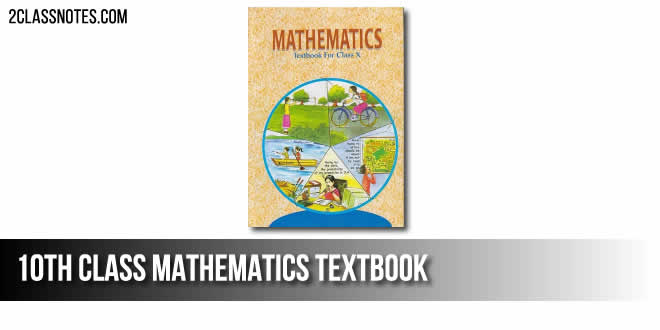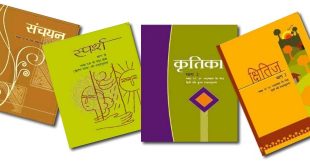Deleted Syllabus of Class 10 Maths CBSE 2024-25: In this article, students will learn about the topics from CBSE Class 10 Maths that are no longer required for the 2025 exams. Also, check the NCERT deleted syllabus for Class 10 Maths for a better understanding.
CBSE Class 10 Maths 2025 Deleted Syllabus: With the advancement and need for upgrading, there have been changes to the curriculum to facilitate the delivery of recent and effective knowledge to students. After the recent pandemic, the Central Board of Secondary Education (CBSE) has introduced many changes to the syllabus by eliminating chapters, topics, and exercise problems.
Here, the latest CBSE Class 10 Mathematics syllabus, which is no longer part of the curriculum, i.e., deleted from the previous edition, is available. Students and teachers must check this deleted syllabus and prepare for the board exams accordingly.
CBSE Class 10 Maths Syllabus 2024-25
Before discussing the deleted syllabus, students must keep a copy of the recent CBSE 10th Maths syllabus 2024-25 to mark the topics which are no longer relevant. Check and download the CBSE 10th Mathematics syllabus 2024-25 PDF from the link provided here.
CBSE Class 10 Maths Deleted Syllabus
CBSE has not introduced any major changes to the latest 2025 Maths Class 10 syllabus. Thus, students can refer to the previous year’s textbooks and other study material freely. To get a clear idea of which topics are no longer covered in the CBSE Class 10 Maths syllabus, check the table below:
|
Chapter
|
Topics
|
|
REAL NUMBERS
|
Euclid’s division lemma
Decimal representation of rational numbers in terms of terminating/non-terminating recurring decimals.
|
|
POLYNOMIALS
|
Statement and simple problems on division algorithm for polynomials with real coefficients.
|
|
PAIR OF LINEAR EQUATIONS IN TWO VARIABLES
|
Simple problems on equations reducible to linear equations.
|
|
QUADRATIC EQUATIONS
|
No Deletion
|
|
ARITHMETIC PROGRESSIONS
|
No Deletion
|
|
COORDINATE GEOMETRY
|
Area of a triangle
|
|
TRIANGLES
|
Proofs of the following theorems are deleted:
|
|
CIRCLES
|
No Deletion
|
|
CONSTRUCTIONS
|
Full Chapter Deleted
|
|
INTRODUCTION TO TRIGONOMETRY
|
No Deletion
|
|
TRIGONOMETRIC IDENTITIES
|
Trigonometric ratios of complementary angles
|
|
HEIGHTS AND DISTANCES
|
No deletion
|
|
AREAS RELATED TO CIRCLES
|
No deletion
|
|
SURFACE AREAS AND VOLUMES
|
Frustum of a cone
Problems involving converting one type of metallic solid into another and other mixed problems. (Problems with combination of not more than two different solids be taken).
|
|
STATISTICS
|
Step deviation Method for finding the mean
Cumulative Frequency graph
|
|
PROBABILITY
|
No deletion
|
NCERT Deleted Syllabus Class 10 Maths
Soon after the deletion of topics from the CBSE Class 10 Mathematics syllabus, the NCERT also revised the textbook content. Check the topics that are no longer covered in the NCERT 10th Maths textbook.
|
Chapter
|
Page No.
|
Dropped Topics / Chapters
|
|
Chapter 1: Real Number
|
2–7
15–18
|
1.2 Euclid’s division lemma
1.5 Revisiting rational numbers and their decimal expansions
|
|
Chapter 2: Polynomials
|
33–37
|
2.4 Division algorithm for polynomials
|
|
Chapter 3:Pair of Linear Equations in Two Variables
|
39–46
57–69
|
3.2 Pair of linear equations in two variables
3.3 Graphical method of solution of a pair of linear equations3.
4.3 Cross-multiplication method
3.5 equation reducible to a pair of linear equations in two variables
|
|
Chapter 4: Quadratic Equations
|
76–88
91–92
|
4.4 Solution of a quadratic equation by completing the squares
|
|
Chapter6: Triangles
|
141–144
144–154
|
6.5 Areas of similar triangles
6.6 Pythagoras theorem
|
|
Chapter7: Coordinate Geometry
|
168–172
|
7.4 Area of a triangle
|
|
Chapter 8: Introduction to Trigonometry
|
87–190
193–194
|
8.4 Trigonometric ratios of complementary angles
|
|
Chapter 9: Some Applications of Trigonometry
|
195–196
205
|
9.1 Introduction
|
|
Chapter 11: Construction
|
216–222
|
11.1 Introduction
11.2 Division of a line segment
11.3 Construction of tangents to a circle
11.4 Summary
|
|
Chapter 12: Areas Related to Circles
|
223
224–226
231–238
|
12.1 Introduction
12.2 Perimeter and area of acircle- A review
12.4 Areas of combinations of plane figures
|
|
Chapter 13: Surface Areas and Volumes
|
248–252
252–259
|
13.4 Conversion of solid from one shape to another
13.5 Frustum of a cone
|
|
Chapter 14: Statistics
|
289–294
|
14.5 Graphical representation of cumulative frequency distribution
|
|
Chapter 15: Probability
|
295–296
311–312
|
15.1 Introduction Exercise
15.2 (Optional)
|
CBSE Class 10 Maths Standard Question Paper Design
Time: 3 Hours
Max. Marks: 80
|
S.No.
|
Typology of Questions
|
Total Marks
|
% Weightage (approx.)
|
|
1
|
Remembering: Exhibit memory of previously learned material by recalling facts, terms, basic concepts, and answers.
Understanding: Demonstrate understanding of facts and ideas by organizing, comparing, translating, interpreting, giving descriptions, and stating main ideas
|
43
|
54
|
|
2
|
Applying: Solve problems to new situations by applying acquired knowledge, facts, techniques and rules in a different way.
|
19
|
24
|
|
3
|
Analysing :
Examine and break information into parts by identifying motives or causes. Make inferences and find evidence to support generalizations
Evaluating:
Present and defend opinions by making judgments about information, validity of ideas, or quality of work based on a set of criteria.
Creating:
Compile information together in a different way by combining elements in a new pattern or proposing alternative solutions
|
18
|
22
|
|
Total
|
80
|
100
|
|
INTERNAL ASSESSMENT 20 MARKS
|
|
Pen Paper Test and Multiple Assessment (5+5) 10 Marks
|
|
Portfolio 05 Marks
|
|
Lab Practical (Lab activities to be done from the prescribed books) 05 Marks
|
CBSE Class 10 Maths Basic Question Paper Design
Time: 3 Hours
Max. Marks: 80
|
S.No.
|
Typology of Questions
|
Total Marks
|
% Weightage (approx.)
|
|
1
|
Remembering: Exhibit memory of previously learned material by recalling facts, terms, basic concepts, and answers.
Understanding: Demonstrate understanding of facts and ideas by organizing, comparing, translating, interpreting, giving descriptions, and stating main ideas
|
60
|
75
|
|
2
|
Applying: Solve problems to new situations by applying acquired knowledge, facts, techniques and rules in a different way.
|
12
|
15
|
|
3
|
Analysing :
Examine and break information into parts by identifying motives or causes. Make inferences and find evidence to support generalizations Evaluating:
Present and defend opinions by making judgments about information, validity of ideas, or quality of work based on a set of criteria.
Creating:
Compile information together in a different way by combining elements in a new pattern or proposing alternative solutions
|
8
|
10
|
|
Total
|
80
|
100
|
|
INTERNAL ASSESSMENT 20 MARKS
|
|
Pen Paper Test and Multiple Assessment (5+5) 10 Marks
|
|
Portfolio 05 Marks
|
|
Lab Practical (Lab activities to be done from the prescribed books) 05 Marks
|
 Class Notes NCERT Solutions for CBSE Students
Class Notes NCERT Solutions for CBSE Students





